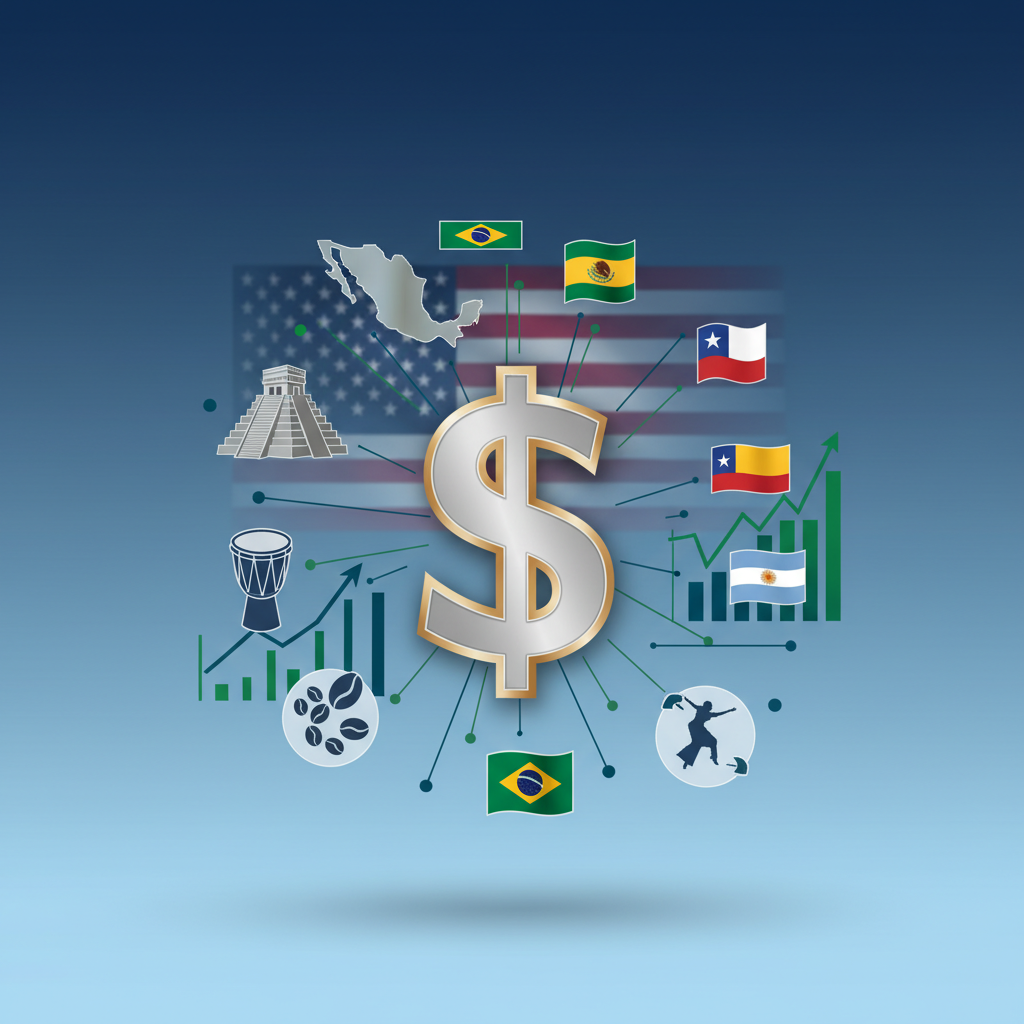Influence of the dollar on public debt and spending
The US dollar plays a fundamental role in Latin American economies, serving as the reference currency for much of their external debt. A strong dollar increases payment costs for countries with debt denominated in this currency.
This increase in debt payments puts pressure on public finances, limiting the government's spending capacity and increasing fiscal vulnerability. These dynamics affect short- and medium-term economic and social stability.
Effects of a strong dollar on external debt
When the dollar strengthens, the local currency value of foreign debt increases considerably, raising its servicing costs. This requires allocating more resources to repayment, reducing availability for other priority expenditures.
Furthermore, a strong dollar can increase the perception of credit risk, making access to new financing more expensive for Latin American countries. The depreciation of local currencies against the dollar exacerbates this financial situation.
Impact on public spending and fiscal vulnerability
Public spending is usually adjusted based on the real cost of debt and other dollar-denominated commitments. Therefore, a strong dollar restricts social investments and projects through greater fiscal effort to meet external obligations.
This increased burden can lead to fiscal deficits, high debt levels, and greater pressure on monetary policy. Fiscal vulnerability grows, limiting the state's capacity to respond to economic or social crises.
Relationship between the dollar and inflation in Latin America
The dollar directly influences inflation in Latin America due to the country's heavy dependence on imports and external debt in this currency. Dollar fluctuations affect the final prices of goods and services.
When local currencies depreciate against the dollar, the cost of imported goods increases, which is passed on to the basic food basket and generates inflationary pressures. This represents a challenge to regional economic stability.
Depreciation of local currencies and increased cost of imports
The depreciation against the dollar makes imports more expensive, as purchasing products in foreign currency requires more local pesos. This primarily affects electronics, fuel, and basic foodstuffs.
This increase in imported prices is quickly reflected in the domestic market, raising the cost of living and particularly affecting consumers on fixed incomes. Productive sectors also face higher input costs.
Consequences of inflation on the region's economies
Rapid inflation reduces the population's purchasing power and increases economic inequality. Countries face pressure to adjust monetary and fiscal policies, often with adverse effects on growth.
Furthermore, high inflation generates uncertainty, limits investment, and triggers wage adjustments that can lead to inflationary spirals. Governments must seek a balance between containing prices without slowing down the economy.
Variations in inflation according to the level of dollarization
Countries with greater financial and commercial dollarization tend to experience lower inflationary impacts from dollar fluctuations, as many transactions and prices are indexed to this currency.
In contrast, those with low dollarization are more vulnerable to inflation stemming from currency depreciation, as prices adjust upward to offset rising import costs and external debt.
Benefits of the dollar for exporters and economic stability
The US dollar represents a crucial advantage for commodity-exporting countries, as their revenues are typically denominated in this currency. This allows for greater financial stability and predictability.
Furthermore, the use of the dollar contributes to maintaining economic stability, facilitating international trade and investment by reducing exchange rate risks and providing a clear reference for interest rates and prices.
Advantages for countries exporting raw materials
Latin American countries that export natural resources benefit from a strong dollar, as their income increases in local currency terms. This improves their trade balance and international reserves.
This situation can also mitigate internal imbalances, given that increased dollar income strengthens public coffers and allows for financing for development projects and social policies.
However, dependence on the dollar also entails risks if international prices fall, so economic diversification is key to sustainably harnessing these benefits.
Influence of the dollar on exchange rate stability and interest rates
The dollar is a determining factor in the exchange rate stability of many Latin American countries, as it acts as a reference currency for establishing monetary policies and controlling volatility.
Interest rates are also influenced by the dollar, as expectations about its strength influence investment and consumption decisions, directly affecting the domestic economy.
A stable dollar facilitates debt management and economic planning, increasing market confidence and encouraging private and foreign investment.
Impact of recent dollar volatility and fluctuations
The volatility of the US dollar directly affects economic decisions in Latin America. Abrupt changes in its value generate uncertainty in fiscal and monetary policies.
This fluctuation makes government and business planning difficult, as exchange rate instability can alter costs, revenues, and debts, affecting regional economic growth.
Effects of dollar volatility on economic policies
The volatility of the dollar forces Latin American governments to constantly adjust their fiscal and monetary policies to mitigate risks. This situation limits their ability to respond to economic crises.
Furthermore, interest rates and international reserves are affected as central banks try to control inflation and stabilize the exchange rate in the face of dollar volatility.
The uncertainty generated can discourage foreign and private investment, as unexpected costs and exchange rate fluctuations complicate the evaluation of medium- and long-term projects.
Consequences of the recent fall of the dollar in the region
The recent fall of the dollar has provided relief to several Latin American economies, reducing the cost of imports and easing pressure on public finances.
However, the impact is not uniform; countries with a high dependence on the dollar experience benefits, while others, with more dollarized economies, face mixed effects on stability and competitiveness.
This decline also raises expectations of lower inflation and exchange rate stability, creating a more favorable environment for investment and domestic consumption in the region.






